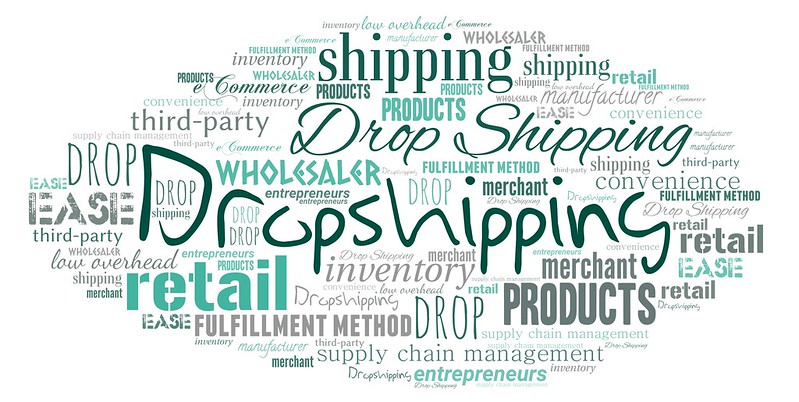Introduction
Table of Contents
In the world of e-commerce, two business models have emerged as methods to make money from home. They are dropshipping and dropservicing. We take a close look at both methods to find out which is better dropshipping or dropserving.
Both offer a low barrier to entry, minimal upfront investment, and the potential for high profits. But which is truly superior? This article aims to dissect each model and look at both their advantages and disadvantages. Providing an deep analysis to help the reader make an informed decision about which path to pursue in their quest for online business success.
What is dropshipping?
Dropshipping is a business model gaining momentum in the e-commerce world, allowing entrepreneurs to run online stores without holding inventory. Instead of purchasing products in bulk and storing them, dropshippers partner with suppliers who ship products directly to customers upon purchase. This eliminates the need for upfront investment and storage space, making it an attractive option for those looking to start an online business with minimal risk.
One key advantage of dropshipping is the flexibility it offers in terms of product variety. Unlike traditional retail models that rely on inventory management, dropshippers can quickly add or remove products from their online store without having to worry about wastage or excess stock. Additionally, this model allows entrepreneurs to test different products and niche markets without significant financial commitment upfront.
Moreover, dropshipping opens up opportunities for global market reach since there are no physical limitations on where suppliers can ship their products. This means that entrepreneurial sellers have the potential to connect with customers worldwide, leading to a broader customer base beyond local or regional boundaries.

Pros and cons of dropshipping
Here’s a list of pros and cons in point form:
Pros of Dropshipping:
Low Initial Investment:
Requires minimal upfront capital compared to traditional retail models.
Low Risk:
Lower risk as you don’t need to purchase inventory until a sale is made.
Wide Product Range:
Easy to offer a wide variety of products without managing inventory.
Location Independence:
Can be operated from anywhere with an internet connection.
Easy to Start:
Quick and straightforward setup compared to traditional retail.
Scalability:
Easier to scale operations without the constraints of inventory management.
Flexibility:
Flexibility to test and change products without significant financial implications.
Reduced Overhead Costs:
Lower operating costs as there’s no need for warehousing or managing inventory.
Focus on Marketing and Sales:
Allows entrepreneurs to concentrate on marketing, customer service, and growing the business.
Cons of Dropshipping:
Lower Profit Margins:
Typically lower profit margins due to increased competition and reliance on supplier pricing.
Inventory Issues:
Dependency on suppliers can lead to inventory issues, such as stockouts or delays.
Quality Control:
Limited control over product quality, packaging, and shipping times.
Supplier Reliability:
Dependence on suppliers; issues with suppliers can directly impact your business.
Increased Competition:
High competition as the barrier to entry is low, leading to market saturation.
Brand Control:
Limited control over branding and customer experience as the product is shipped directly from the supplier.
Shipping Complexities:
Shipping times and costs can vary, affecting customer satisfaction.
Customer Service Challenges:
Dealing with customer inquiries and issues, even though you may not have direct control over the product or shipping process.
Profit Dependency on Third Parties:
Relying on third-party suppliers for inventory and fulfillment can lead to unexpected challenges.
Legal and Tax Considerations:
Complexities in terms of legal and tax implications, especially if dealing with international suppliers.
What is dropservicing?
Dropservicing is a business model that has been gaining momentum in recent years. While it shares similarities with dropshipping, dropservicing involves selling services rather than physical products. This means that as a dropservicer, you act as the middleman between clients and freelance service providers, offering services such as digital marketing, website design, copywriting, or video editing.
One of the key advantages of dropservicing is its potential for high-profit margins. As a dropservicer, you have the flexibility to set your prices and negotiate deals with freelancers, allowing you to earn significant returns on each project. Additionally, dropservicing allows for scalability since you can expand your range of offered services without worrying about inventory or storage constraints.

Unlike traditional service-based businesses that require extensive infrastructure or employee management, dropservicing can be operated remotely and with minimal overhead costs. This adaptability makes it an attractive option for entrepreneurs looking to start a low-risk venture in the rapidly growing online service market. As the demand for digital services continues to rise, dropservicing presents an exciting opportunity for individuals willing to capitalize on this trend.
Pros and cons of dropservicing
Dropservicing, similar to dropshipping, involves acting as an intermediary between clients and service providers rather than selling physical products. Here are the pros and cons of dropservicing in point form:
Pros of Dropservicing:
Low Overhead:
Requires minimal upfront investment compared to traditional service-based businesses.
Scalability:
Easier to scale as you can leverage the expertise of a network of freelancers or service providers.
Focus on Marketing and Sales:
Allows you to concentrate on marketing, sales, traffic and client relations rather than performing the services yourself.
Wide Range of Services:
Can offer a diverse range of services without having to master each skill personally.
Location Independence:
Can be operated from anywhere, offering flexibility and freedom.
No Need for Specialized Skills:
You don’t necessarily need to possess specific skills or expertise in the services you offer, as you can hire experts.
Reduced Administrative Burden:
Minimal involvement in the day-to-day operations of service delivery.
Quick Setup:
Faster and easier to set up compared to traditional service businesses.
Cons of Dropservicing:
Quality Control:
Limited control over the quality of services provided by freelancers or third-party service providers.
Dependency on Service Providers:
Relies heavily on the reliability and performance of the freelancers or service providers you work with.
Communication Challenges:
Potential communication issues between clients, yourself, and the service providers.
Profit Margins:
Profit margins may be affected due to the need to pay service providers for their work.
Client Expectations:
Managing client expectations can be challenging, especially if there are discrepancies between what is promised and what is delivered.
Competition:
High competition in the online service market, making it essential to differentiate your offerings.
Legal and Contractual Issues:
Potential legal and contractual challenges when dealing with both clients and service providers.
Limited Control Over Timelines:
Less control over project timelines, as they are often influenced by the availability and speed of service providers.
Reputation Management:
The reputation of your dropservicing business may be impacted by the performance of service providers.
Understanding Multiple Industries:
Requires a broad understanding of various industries and services to effectively connect clients with appropriate providers.
Final Thoughts on which is better dropshipping or dropservicing
The choice between dropshipping and dropservicing ultimately depends on individual preferences, expertise, and business goals. Dropshipping offers an attractive entry point for those with limited capital or experience in e-commerce, as it requires minimal initial investment and allows for a wide range of product offerings. On the other hand, dropservicing leverages skills and expertise to provide high-value services to clients, potentially leading to higher margins and recurring revenue streams.
It’s important to consider factors such as market demand, competition, scalability, and personal strengths when deciding which model aligns best with one’s entrepreneurial aspirations. The versatility of dropshipping may appeal to individuals looking for a low-risk venture with the potential for rapid growth through strategic product selection and marketing efforts. Conversely, dropservicing may attract those who possess specialized skills or industry knowledge that can be monetized through service-based offerings.
Ultimately, both dropshipping and dropservicing offer unique opportunities for aspiring entrepreneurs. By carefully evaluating your own resources, interests, and market dynamics, you can make an informed decision about which path is better suited for your business ambitions. Whether you choose to pursue dropshipping or dropservicing—or perhaps even explore a combination of both—the key lies in understanding the specific demands of each model and leveraging them effectively within your entrepreneurial journey.




